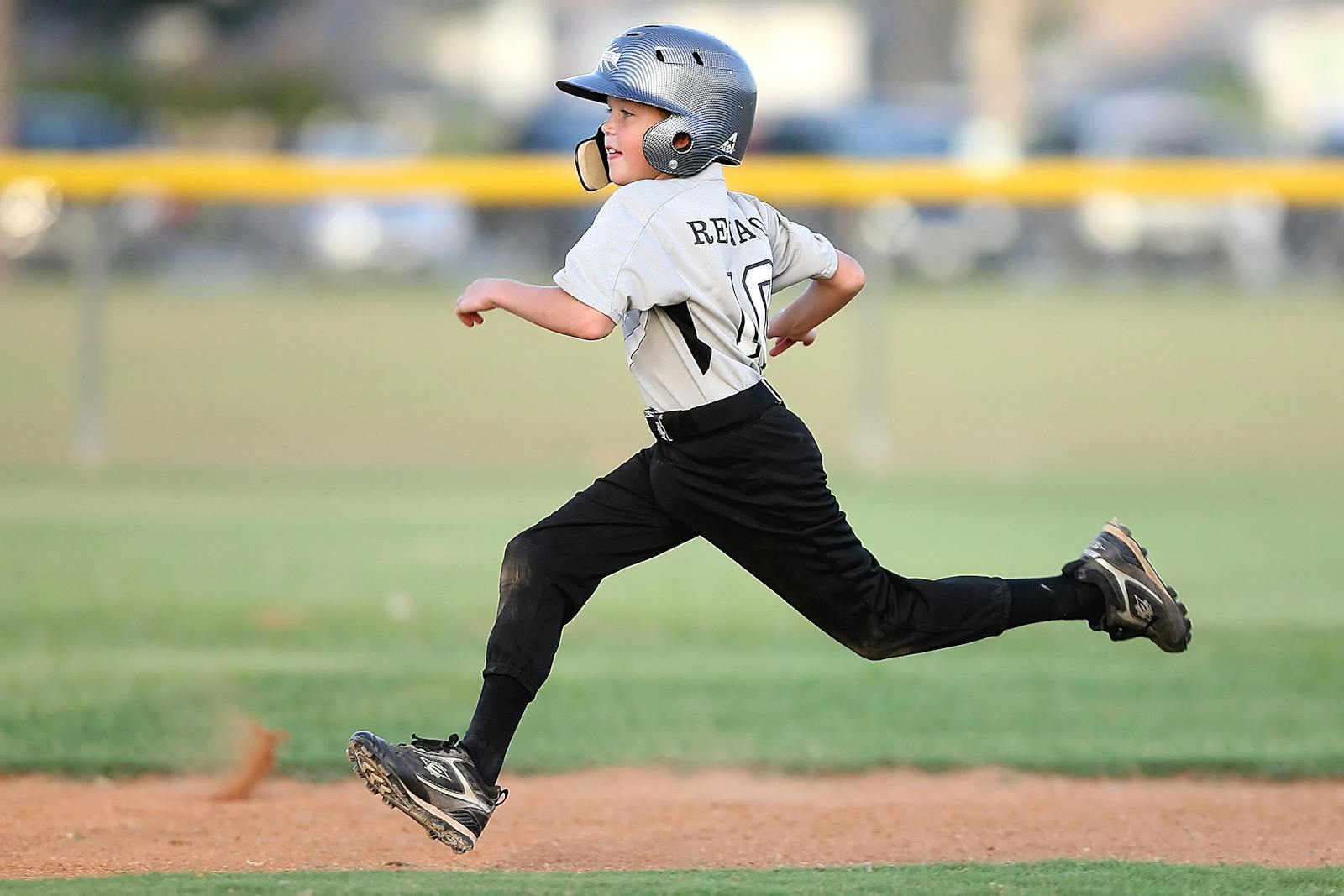Physical activity is essential for the healthy growth and development of children. It not only strengthens their bodies but also enhances cognitive function, emotional well-being, and social skills. In an age where sedentary lifestyles are becoming increasingly common due to screen time and urban living, encouraging your child to be active is more important than ever. This comprehensive guide provides strategies and insights on how to motivate your child to embrace physical activities, fostering a lifelong appreciation for health and fitness.
Understanding the Importance of Physical Activity for Children
Before delving into strategies, it’s crucial to understand why physical activity is vital for children.
Physical Health Benefits
- Growth and Development: Regular exercise promotes healthy bone and muscle development, reducing the risk of obesity and related health issues like diabetes and hypertension.
- Motor Skills: Physical activities enhance coordination, balance, agility, and overall motor skills, which are essential for everyday tasks and sports.
- Immune System: Active children often have stronger immune systems, making them less susceptible to common illnesses.
Mental and Emotional Benefits
- Cognitive Function: Exercise increases blood flow to the brain, improving concentration, memory, and academic performance.
- Emotional Well-being: Physical activity releases endorphins, natural mood lifters that reduce stress, anxiety, and symptoms of depression.
- Self-Esteem: Achieving physical goals boosts confidence and self-worth.
Social Benefits
- Teamwork and Cooperation: Participating in group sports teaches children how to work with others toward a common goal.
- Communication Skills: Interacting with peers during activities enhances social skills and builds friendships.
- Leadership and Responsibility: Taking on roles within teams can develop leadership qualities and a sense of responsibility.
Understanding these benefits underscores the importance of encouraging your child to be active and provides motivation for implementing the strategies that follow.
Assessing Your Child’s Interests and Needs
Every child is unique, with individual preferences, strengths, and challenges. Tailoring your approach to suit your child’s specific needs increases the likelihood of success.
Identifying Interests
- Observe Their Preferences: Pay attention to the types of activities your child naturally gravitates toward. Do they enjoy team sports, individual challenges, or creative movement like dance?
- Ask for Input: Engage in conversations about what activities they find exciting or would like to try. Their input is valuable in selecting suitable options.
- Consider Their Personality: Introverted children might prefer solo activities like cycling or swimming, while extroverted ones might thrive in team sports.
Recognizing Physical Abilities and Limitations
- Assess Physical Development: Be mindful of your child’s physical capabilities. Pushing them into activities beyond their ability can lead to frustration or injury.
- Accommodate Special Needs: If your child has physical, sensory, or cognitive disabilities, seek adaptive sports programs designed to be inclusive and accommodating.
Setting Realistic Expectations
- Avoid Comparisons: Each child progresses at their own pace. Comparing them to siblings or peers can diminish their confidence.
- Focus on Enjoyment: Emphasize fun over performance. The primary goal is to foster a love for physical activity.
By aligning activities with your child’s interests and abilities, you create a positive and motivating environment for engagement.
Creating a Supportive Environment
A nurturing environment at home sets the foundation for an active lifestyle.
Lead by Example
- Model Active Behavior: Children often emulate their parents. Demonstrate your commitment to physical activity by regularly engaging in exercises or sports.
- Family Activities: Plan active outings such as hikes, bike rides, or playing sports together. This not only promotes fitness but also strengthens family bonds.
- Positive Attitude: Show enthusiasm for physical activity. Your positive outlook can influence your child’s perception.
Provide Resources and Opportunities
- Accessible Equipment: Ensure your child has the necessary equipment for their chosen activities, such as balls, bikes, or appropriate footwear.
- Safe Spaces: Create or identify safe areas for play, whether it’s a backyard, local park, or community center.
- Transportation and Support: Facilitate attendance at practices, games, or classes. Your logistical support is crucial, especially for younger children.
Limit Screen Time
- Establish Boundaries: Set reasonable limits on the use of electronic devices. Excessive screen time is a significant barrier to physical activity.
- Encourage Alternatives: Offer active options during times when your child might typically resort to screens.
By fostering an environment that values and supports physical activity, you make it easier for your child to choose active pursuits over sedentary ones.
Incorporating Physical Activity into Daily Life
Making activity a natural part of your child’s routine encourages consistency.
Active Transportation
- Walk or Bike to School: If feasible, encourage walking or biking to school instead of driving. This adds regular physical activity to their day.
- Park Further Away: When driving, choose parking spots that require a bit of a walk to the destination.
- Use Stairs: Opt for stairs over elevators or escalators whenever possible.
Chores and Responsibilities
- Involve Them in Physical Tasks: Assign chores that require movement, such as gardening, walking the dog, or washing the car.
- Make It Fun: Turn chores into games or challenges to increase engagement.
Playtime
- Unstructured Play: Allow time for free play, which is essential for creativity and physical development. Activities like playing tag, jumping rope, or climbing are beneficial.
- Playdates: Organize playdates with active friends to encourage group play and social interaction.
By integrating activity into everyday routines, you normalize movement and reduce resistance.
Encouraging Participation in Organized Sports and Activities
Structured programs can provide additional motivation and skill development.
Exploring Options
- Community Programs: Research local sports leagues, dance classes, martial arts schools, or other organized activities.
- School Activities: Encourage participation in school-based sports or clubs.
- Trial Classes: Take advantage of free trial sessions to find the right fit without commitment.
Supporting Their Involvement
- Attend Events: Show interest by attending games, recitals, or competitions. Your presence validates their efforts.
- Volunteer: If possible, get involved as a coach, team parent, or helper. This deepens your engagement and support.
- Celebrate Achievements: Acknowledge milestones and progress, regardless of the outcome.
Balancing Commitments
- Avoid Over-Scheduling: Ensure your child has downtime to rest and pursue other interests.
- Monitor Stress Levels: Be attentive to signs of burnout or excessive pressure, which can diminish enjoyment.
Organized activities provide structure and social opportunities that can enhance your child’s engagement in physical activity.
Making Physical Activity Enjoyable
Fun is a critical factor in sustaining your child’s interest.
Gamify Exercise
- Use Technology: Leverage fitness apps or video games that promote movement, such as dance or sports games.
- Create Challenges: Set up friendly competitions or personal challenges to achieve specific goals.
- Reward Systems: Implement a reward system for meeting activity milestones, such as stickers, points, or privileges.
Variety is Key
- Mix It Up: Introduce different activities to prevent boredom. Rotate between sports, outdoor adventures, and creative movement.
- Seasonal Activities: Embrace seasonal options like swimming in the summer or ice skating in the winter.
- Cultural Exposure: Explore activities from different cultures, such as yoga, capoeira, or tai chi.
Social Engagement
- Invite Friends: Encourage your child to invite friends to participate in activities, enhancing enjoyment through social interaction.
- Family Challenges: Organize family-wide events like obstacle courses or mini-Olympics.
By focusing on enjoyment, you help your child associate physical activity with positive emotions, increasing the likelihood of continued participation.
Overcoming Common Barriers
Addressing obstacles proactively ensures that challenges do not derail your efforts.
Lack of Interest
- Find the Right Activity: If initial attempts are unsuccessful, continue exploring until you find an activity that resonates with your child.
- Involve Them in Decision-Making: Allow your child to have a say in choosing activities, increasing their investment.
- Be Patient: Interests can change over time. Reintroduce activities periodically.
Time Constraints
- Prioritize Activity: Schedule physical activity as you would any important appointment.
- Combine Activities: Incorporate exercise into existing routines, such as doing stretches while watching TV.
- Family Scheduling: Coordinate family schedules to include group activities.
Physical Limitations or Health Concerns
- Consult Professionals: Work with healthcare providers to identify suitable activities.
- Adaptive Programs: Seek out programs designed for children with specific needs.
- Focus on Abilities: Emphasize what your child can do rather than limitations.
Safety Concerns
- Supervision: Ensure activities are appropriately supervised, especially for younger children.
- Protective Gear: Invest in necessary safety equipment, such as helmets or knee pads.
- Education: Teach your child about safety rules and proper techniques.
By anticipating and addressing barriers, you create a supportive path for your child’s active lifestyle.
Encouraging Positive Attitudes Towards Physical Activity
Building a healthy mindset is as important as the physical aspect.
Emphasize Health Over Appearance
- Avoid Weight Focus: Steer clear of emphasizing weight loss or body image, which can lead to negative self-perception.
- Highlight Strength and Ability: Celebrate improvements in strength, endurance, or skill mastery.
Teach Goal Setting
- Set Achievable Goals: Help your child establish realistic and specific objectives.
- Track Progress: Use charts or journals to monitor achievements and reflect on growth.
- Celebrate Effort: Recognize dedication and hard work, not just outcomes.
Address Negative Self-Talk
- Encourage Positivity: Challenge statements like “I’m not good at this” with supportive affirmations.
- Share Personal Experiences: Discuss times when you faced challenges and how persistence led to improvement.
By fostering a positive attitude, you help your child develop resilience and a healthy relationship with physical activity.
Educating About the Benefits of Physical Activity
Understanding the ‘why’ can motivate behavior.
Age-Appropriate Information
- Simplify Concepts: For younger children, explain benefits in simple terms, like “Exercise helps you run faster and play longer.”
- Use Analogies: Compare the body to a machine that needs fuel (food) and maintenance (exercise).
Interactive Learning
- Educational Games: Utilize games or apps that teach about the body and health.
- Visual Aids: Use diagrams or models to illustrate concepts like how the heart works.
Encourage Questions
- Open Dialogue: Invite your child to ask questions about health and fitness.
- Resource Access: Provide books or videos that explore physical activity topics.
An informed child is more likely to value and engage in healthy behaviors.
Collaborating with Schools and Communities
Leveraging external resources can enhance opportunities.
School Programs
- Physical Education Classes: Encourage active participation in PE classes and school sports teams.
- After-School Activities: Explore extracurricular options offered by the school.
- Advocate for Programs: Participate in parent organizations to support and promote physical activity initiatives.
Community Resources
- Local Clubs and Leagues: Enroll your child in community sports programs.
- Parks and Recreation: Utilize facilities and programs offered by local parks departments.
- Cultural Organizations: Engage with community centers that offer diverse activity options.
Networking
- Parent Groups: Connect with other parents to share information and coordinate activities.
- Volunteer Opportunities: Involve your child in community service that includes physical activity, such as park clean-ups.
Collaboration expands the range of activities and reinforces the importance of an active lifestyle.
Monitoring Progress and Adjusting Strategies
Regular assessment ensures that activities remain effective and enjoyable.
Regular Check-Ins
- Discuss Experiences: Talk with your child about what they enjoy or find challenging.
- Observe Behavior: Note changes in mood, energy levels, or attitude towards activities.
Be Flexible
- Adapt as Needed: Be willing to change activities if interest wanes or new opportunities arise.
- Balance Structure and Freedom: Provide guidance while allowing your child to take ownership of their activity choices.
Celebrate Successes
- Acknowledge Achievements: Recognize both big and small milestones.
- Reflect on Growth: Encourage your child to see how their efforts have led to improvements.
Monitoring and adjusting keep the experience positive and aligned with your child’s evolving needs.
Understanding the Role of Nutrition
Complementing physical activity with proper nutrition enhances overall health.
Balanced Diet
- Essential Nutrients: Ensure your child consumes a variety of foods that provide carbohydrates, proteins, fats, vitamins, and minerals.
- Hydration: Encourage regular water intake, especially before, during, and after physical activity.
Healthy Eating Habits
- Regular Meals: Maintain consistent meal times to fuel their bodies appropriately.
- Involve Them in Meal Preparation: Teaching about nutrition can increase interest in healthy foods.
Limit Unhealthy Options
- Reduce Sugary Drinks and Snacks: Excess sugar can lead to energy crashes and negatively impact performance.
- Educate on Food Choices: Help your child understand how different foods affect their body and activity levels.
Proper nutrition supports the physical demands of an active lifestyle and promotes recovery.
Addressing Emotional and Psychological Factors
Emotional well-being is closely linked to physical activity.
Build Self-Confidence
- Positive Reinforcement: Offer praise that focuses on effort and improvement rather than innate ability.
- Set Achievable Challenges: Success in attainable goals builds confidence to tackle more difficult tasks.
Manage Performance Pressure
- Focus on Fun: Ensure that activities remain enjoyable and not solely outcome-driven.
- Avoid Excessive Criticism: Constructive feedback should be balanced with encouragement.
Support Through Setbacks
- Teach Resilience: Help your child learn from losses or failures and view them as opportunities for growth.
- Be Empathetic: Acknowledge their feelings and provide comfort when needed.
By supporting your child’s emotional needs, you enhance their ability to engage positively with physical activities.
Encouraging Lifelong Habits
The ultimate goal is to instill a lasting appreciation for an active lifestyle.
Education and Empowerment
- Knowledge Sharing: Continue educating your child about the long-term benefits of physical activity.
- Skill Development: Focus on teaching skills that can be enjoyed throughout life, such as swimming or cycling.
Transitioning Responsibility
- Foster Independence: As your child grows, encourage them to take more responsibility for their activity choices.
- Set Long-Term Goals: Help them set personal fitness goals that extend into adulthood.
Role Modeling
- Consistent Example: Maintain your own commitment to an active lifestyle.
- Family Legacy: Create traditions that emphasize activity, such as annual hikes or charity runs.
By nurturing a positive relationship with physical activity, you prepare your child to maintain healthy habits into the future.
Conclusion
Encouraging your child to be active and engage in physical activities is a multifaceted endeavor that requires patience, creativity, and dedication. By understanding their unique interests and needs, creating a supportive environment, and making physical activity enjoyable, you lay the groundwork for a healthy and fulfilling lifestyle. Overcoming barriers, fostering positive attitudes, and collaborating with schools and communities further enhance these efforts. Remember, the goal is not only to promote physical health but also to support emotional well-being, social skills, and personal development. Through your guidance and encouragement, you can help your child embrace the joy of movement and carry the benefits of an active lifestyle throughout their lives.




